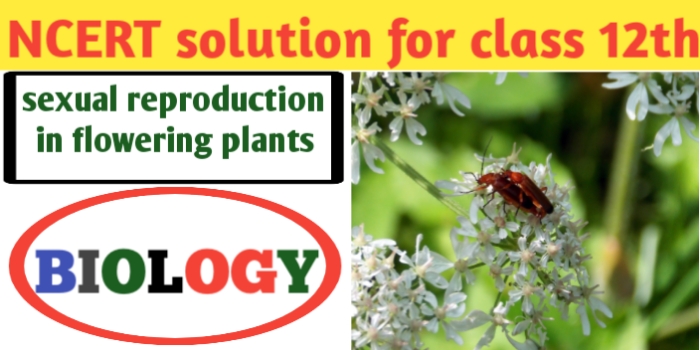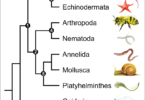ncert solutions for class 12 biology chapter- 2- CBSE-JAC exams
■ topics:- sexual reproduction in flowering plants and their ncert solutions for class12 biology chapter -2- CBSE-JAC exams
■ subtopics:- sexual reproduction in flowering plants and ncert solutions for class 12 biology chapter -2- CBSE-JAC exams
* introduction :- ncert solutions for class 12 biology chapter- 2- CBSE-JAC exams and students might be busy in your preparation for coming 12th board Jharkhand academic Council exams.biologysir.com will provide many type of education material like fill in the blanks, true or false matching type questions ,multiple choice questions, very short questions answers type, short questions answer type and long questions type of 12th class Biology from each topic that help you in your preparation.and sexual reproduction in flowering plants
*In this post :- ncert solutions for class12 biology chapter -2- CBSE-JAC exams and we provide you matching type questions with answer from the lesson 2 sexual reproduction in flowering plants
ncert solutions for class 12 biology chapter- 2-
(Q1) name the parts of an angiosperm flower in which development of male and female gametophyte takes place
Ans. Development of male gametophyte occurs from pollen grains which are developed in pollen sac of stamen and and development of female gametophyte that is embryo sac develop from megaspore of carpel
(Q2) differentiate between microsporogenesis and megasporogenesis ?which type of cell division occurs during these events ?name the structure formed at the end of these two events?
Ans. A) difference between microsporogenesis and megasporogenesis
a) diploid microspore mother cells undergoes meiosis and formed four microspore that is known as microsporogenesis and formation of megaspore by megaspore mother cell due to meiosis cell division is known as megasporogenesis
b) in microsporogenesis process many spore mother cells in involved but in megasporogenesis process 1 spore mother cell is involved
c) microspore leads to development of male gametophyte but megasporogenesis is formation of female gametophyte
B) the type of cell division during microsporogenesis and megasporogenesis is meiosis cell division
C) by the process of microsporogenesis microspore pollen grains are forms and by the process of megasporogenesis megaspore are formed
(Q3) arrange the following terms in correct developmental sequence :-pollen grains ,sporogenous tissue, microspore tetrad ,Pollen mother cell ,male gamets
Ans. Sporogenous tissue -Pollen mother cell -microspore tetrad- pollen grain -male gametes
(Q4) what is meant by monosporic development of female gametophyte
Ans. Monosporic development of female gametophyte is that process in which only one of the four megaspore take part in the formation of embryo sac, and megaspore is formed by three division of functional megaspore mother cell. 8 nuclei formed in embryo sac in which 3 nuclei arranged at micropylar end and 3 are Chalaza end and two arrange in centre.
(Q5) what are chasmogamous flowers? Can cross pollination occurs in cleistogamous? flowers give reason for your answer
Ans. A) chasmogamous flower:- flower which remains open and exposes theire anther and stigma are called as chasmogamous flowers in which there is a chance of cross pollination
B) Cleistogamous flowers do not open at all because anther and stigma are not expose and it is remain closed and cross pollination cannot takes place in such cases so there is a suitable condition for self pollination and autogamy

ncert solutions for class 12 biology chapter 2- CBSE-JAC exams
(Q6) mention two strategies involve by flowers to prevent self pollination
Ans. A) unisexuality:- the flowers are unisexual having one sex only .unisexual flowers are present on different plants that promotes the cross pollination
B) dichogamy:- in bisexual flowers anther and stigma mature at different times that condition suitable for the cross pollination
◆you should also visits our website https://biologysir.com and other website for civil engineer calculation at https://www.civilsir.com
■ follow on YouTube
◆name of fathers in field of Biology
● all full forms of 11th and 12th Biology
(Q7) what is self incompatibility ?why does self pollination not lead to seed formation in self incompatible species?
Ans. Self incompatibility is pre fertilization barriers ,it is the incompatibility with in spaces and functional male gametes fails to affect fertilization with female gametes. Extensive selfing of plants leads to highly homozygous individual which have low survival value. nature has imposed self incompatibility to check it.
(Q8) what is bagging technique ?how is it useful in a plant breeding programme
Ans. In artificial hybridisation the pollen grains are removed from selective flower that is called in emasculation and emasculated flowers are covered with a bag of suitable size generally made of butter paper this step is called bagging. Bagging technique is done for prevention of contamination of unwanted pollen grains with its stigma. When stigma of bag flower attends receptivity and mature then mature selective pollen grains are collected from anther of male parents and are dusted on that stigma now the flowers are re bag and fruits are allowed to develop.
Advantage of bagging technique
1) bagging technique is used for Cross breeding
2) it is artificial hybridisation by which commercially superior varieties of different types of useful plants are obtained
(Q9) what is triple fusion? where and how does it takes ?place name the nuclei involved in triple fusion?
Ans. A) Triple fusion:- it is fusion of second male gamete with the secondary nucleus to formed primary endosperm nucleus is called as triple fusion
B) triple fusion occurs in the centre of embryo sac where two Pollen nuclei are present
C) the nuclei involved in triple fusion are two polar nuclei and one second male gamets
(Q10) why do you think the zygote is dormant for sometimes in fertilised ovule?
Ans. You know that zygote start formation of embryo only when certain amount of endosperm is formed ,this is an adaptation to provide and nutrition to the developing embryo by the endosperm so for the sometime zygote is remain dormant.
(Q11) differentiate between following
A) hypocotyl and epicotyl
Ans. Hypocotyl is the cylindrical position below the level of cotyledons is called as hypocotyl and the portion of embryonic Axis above the level of cotyledons is called as epicotyl
B) Coleoptile and Coleorhiza
Ans. 1) Coleoptile :- epicotyl has shoot Apex and a few leaf primordia enclosed in a hollow foliar structure called coleoptile
2) Coleorhiza:- the embryonal axis have radical and root cap enclosed in an un differentiated sheath called coleorhiza
C) integument and testa
Ans. Integument is outer protective envelope of ovule and testa is outer seed coats
D) perisperm and pericarp
Ans. Perisperm is the residual persistent nucellus and pericarp is covering of fruit wall
(Q12) why Apple is called as false fruit ?what parts of flower formed the fruit?
Ans. Fruits developed from other parts of ovary is known as false fruits . in apple wall of ovary is fused with thalamus which developed into fruits that’s why Apple is false fruit. In apple thalamus of ovary and flower is developed in fruits. Fleshy thalamus is edible part in Apple
(Q13) what is meant by emasculation ? when and what does a plant breeder employ this technique?
Ans. Emasculation is the process of removal of pollen grains from anther of selective flowers of plant ,in crossing experiment it is necessary that only Desired pollen grains are used for pollination with stigma and stigma is protected from contamination with unwanted Pollen grains this is achieved by emasculation and bagging technique.
(Q14) if one can induce parthenocarpy through the application of growth substance ,which fruits you would select parthenocarpy and why?
Ans. You know that parthenocarpic fruits are seedless because seedless fruits in plant like Banana grapes and guava are in great demand the process is of practical value
(Q15) explain the role of tapetum in the pollen grains wall formation
Ans. Tapetum is the innermost layer of microsporangia and it provide nourishment to Young microspore Mother cell
(Q16) what is apomixis and what is its importance?
Ans. In apomixis process, seeds are formed without fertilization. it has been reported particulary in grasses it has advantages in Horticulture and Agriculture.






Leave a Comment